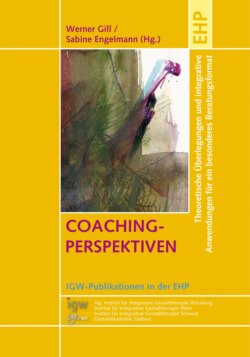Читать книгу COACHING-PERSPEKTIVEN - Группа авторов - Страница 50
Presence
ОглавлениеPresence in coaching is not neutral, it implies the coache’s full presence in the »here and now« work, but also the desire of the coach for honest and authentic encounter with the client (Radionov 2008). In opposed to advising a client, the coach puts greater emphasis on the dialogue with the purpose to enlighten the client’s current situation. In accordance with the paradoxical theory of change, this approach will lead to the experiential shift toward a creative solution to the existing problem(s).
The presence of the coach is prerequisite for establishing trust between him and the client and the implementation of meaningful interventions. Many times it includes the ability to stay in silence. Presence and trust create a psychologically safe space in which the client can just be instead of having to do something.
In Gestalt coaching the coach uses himself as instrument to stimulate the client’s awareness and contact through interaction and dialogue. Next to asking questions, which represents an universal tool for all coaching practitioners, Gestalt practitioners add some other elements to the coaching dialogue, such as their observations of the client as well as their own experiences when appropriate. For example, the coach may say to the client, »You seem quite angry when talking about your boss«, or, »I feel excited hearing you talking about your new assignment«.
Each coach is present in the coaching situation in a unique way, in accordance with his personal values and competencies. However, certain skills, competencies and values of the coach are particularly helpful for enhancing the client’s change and development. Most of these values and competencies are related to enhancing awareness, improving articulation and communication of the experience, managing the energy in the system and completing the experience (Nevis, 1987).
An important element of presence is the degree of integration between what the coach says and how the coach acts and behaves. The coach as a person should be consistent and congruent. In this case, the clients recognize the high degree of integration, feel interested, curious and engaged for the work, so the beneficial effects of coaching typically occur (Bluckert 2006).
